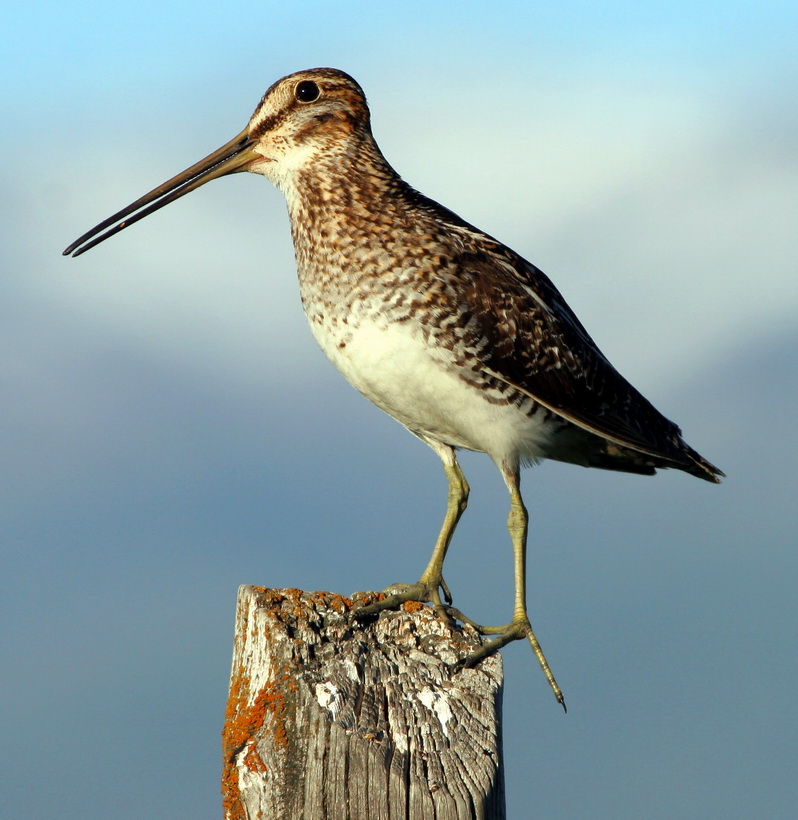Common Snipe
From Wikipedia, the free encyclopedia
[Photo] Common Snipe perched on a fencepost in Central Utah. Photo by http://en.wikipedia.org/wiki/User:Talshiarr
The Common Snipe or Fantail Snipe (Gallinago gallinago) is a small, stocky shorebird.
The breeding habitat is marshes, bogs, tundra and wet meadows in Iceland, the Faroes, northern Europe and Russia. Common Snipe nest in a well-hidden location on the ground.
European birds winter in southern Europe and Africa, and Asian migrants move to tropical southern Asia..
Adults are 23-28 cm in length with a 39-45 cm wingspan. They have short greenish-grey legs and a very long straight dark bill. The body is mottled brown on top and pale underneath. They have a dark stripe through the eye, with light stripes above and below it. The wings are pointed.
These birds forage in soft mud, probing or picking up food by sight. They mainly eat insects and earthworms, also plant material.
The male performs "winnowing" display during courtship, flying high in circles and then taking shallow dives to produce a distinctive sound.
This species closely resembles the Wilson's Snipe, G. delicata, of North America, which was until recently considered to be a subspecies G. g. delicata of Common Snipe. The latter differs from the North American species in having a wider white edge to the wings, and seven pairs of tail feathers instead on eight.
There are two other races of Common Snipe; G. g. faeroeensis in Iceland, the Faroes, Shetland and Orkney, and G. g. gallinago in the rest of the Old World. The latter is a species to which the Agreement on the Conservation of African-Eurasian Migratory Waterbirds (AEWA) applies.
This well camouflaged bird is usually shy and conceals itself close to ground vegetation and flushes only when approached closely. They fly off in a series of aerial zig-zags to confuse predators. Snipe hunters, therefore, needed to be very skilled to hunt these birds and they came to be called snipers - a term later adopted by the military.
http://en.wikipedia.org/wiki/Common_Snipe
| The text in this page is based on the copyrighted Wikipedia article shown in above URL. It is used under the GNU Free Documentation License. You may redistribute it, verbatim or modified, providing that you comply with the terms of the GFDL. |
|

